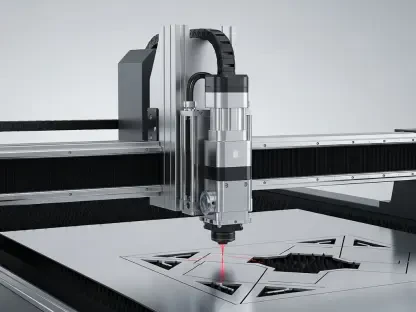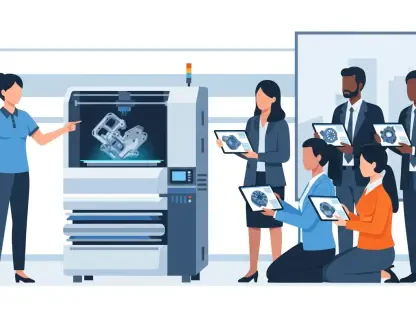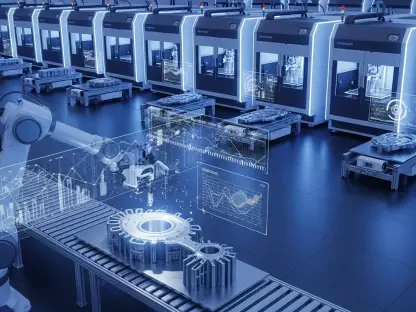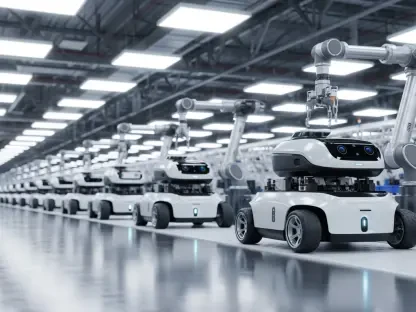With the unveiling of the world’s most advanced microchip, featuring 2-nanometer (2nm) technology, Taiwan Semiconductor Manufacturing Company (TSMC) is poised to revolutionize the technological landscape. Announced on April 1, 2025, this advancement promises significant improvements in microchip performance and efficiency, affecting a wide range of sectors and applications.
A Major Leap in Microchip Technology
Unveiling the 2nm Chip
TSMC’s latest 2nm chip represents a major milestone, offering a 10%-15% increase in computing speed at the same power level or a 20%-30% reduction in power consumption at the same speed compared to its 3nm predecessor. This leap in performance is accompanied by a roughly 15% increase in transistor density, underscoring the remarkable progress in microchip technology. The increase in transistor density enables devices to operate faster and more efficiently, setting the stage for new advancements in consumer electronics and beyond.
The creation of microchips involves layering and etching materials, such as silicon, to form microscopic circuits housing billions of transistors. These transistors act as tiny switches, regulating electrical flow and enabling computers to function. The industry’s pursuit of increasing transistor density within smaller areas is driven by the demand for faster and more powerful chips. TSMC’s 2nm chip technology is a notable advancement over its predecessor, the 3nm chip, which paves the way for significant improvements in computing speed and energy efficiency.
Impact on Device Performance
The higher transistor density of 2nm chips means that electronic devices can operate faster, consume less energy, and handle more complex tasks efficiently. Enhanced device performance and longer battery life lead to smaller, lighter gadgets that do not compromise power, setting the stage for new advancements in consumer technology. Smartphones, laptops, household appliances, and electric toothbrushes could all benefit from the enhanced processing capabilities and improved energy efficiency that these new chips offer.
Moreover, the release of 2nm chips has broader implications for various sectors. Devices equipped with these advanced chips are expected to provide better performance, longer battery life, and more responsive user experiences. Smaller, lighter gadgets equipped with 2nm chips could drive significant changes in consumer technology, enabling more powerful, efficient, and environmentally-friendly devices without sacrificing functionality or performance.
Catalyzing AI and Data Center Evolution
Enhanced AI-Driven Applications
The improved efficiency and speed of 2nm chips are likely to bolster AI-driven applications, including voice assistants, real-time language translation, and autonomous computing systems. These enhancements could lead to significant breakthroughs in the usability and practicality of AI technologies. The increased processing capabilities provided by 2nm chips could enable more advanced AI algorithms and more responsive AI systems, making these technologies more accessible and useful for everyday applications.
AI-driven applications, such as smart home devices and autonomous vehicles, could greatly benefit from the enhanced computational power and energy efficiency provided by TSMC’s 2nm technology. Improved performance in AI applications will enable more complex and accurate data processing, enhancing the overall user experience and driving new innovations in AI technology. This, in turn, could lead to more widespread adoption of AI-driven solutions in various industries.
Benefits for Data Centers
Data centers stand to gain substantially from the reduced energy consumption and heightened processing capabilities of 2nm chips. These advantages not only contribute to environmental sustainability but also lead to more efficient and powerful computing infrastructures, providing a robust foundation for future technological innovations. The ability to manage larger data sets more efficiently and process complex computations more quickly will be essential for the continued growth of data-centric industries.
With lower power consumption and increased processing power, 2nm chips can help data centers meet the growing demand for energy-efficient computing solutions. Enhanced performance and energy efficiency will enable data centers to operate more sustainably, reducing overall energy costs and lowering the environmental impact of large-scale computing operations. This aligns with the industry’s goals of promoting greener and more efficient technological advancements.
Broader Industrial Implications
Advancements in Autonomous Systems
The automotive and robotics industries could benefit from the increased processing speed and reliability provided by 2nm chips. Enhanced performance will improve the efficiency and safety of autonomous vehicles and robotic systems, driving broader adoption and innovation within these sectors. The ability to process complex tasks more effectively and respond to real-time data more accurately will be crucial for the advancement of autonomous technologies.
Autonomous vehicles equipped with 2nm chips could provide smoother and more reliable navigation, enhancing safety and user experience. Robotics applications, from industrial automation to healthcare, could achieve new levels of efficiency and precision with the improved processing capabilities of 2nm technology. The integration of these chips into autonomous systems will be key to driving future innovations and expanding the possibilities within these industrial sectors.
Role in Taiwan’s Semiconductor Industry
Taiwan’s critical role in the global semiconductor industry, especially with TSMC’s dominance, continues to shape international security dynamics. TSMC’s advanced microchips are integral to the technology of leading companies, reinforcing the strategic importance of safeguarding this key industry. Taiwan accounts for 60% of the global foundry market, with TSMC contributing the majority, underscoring the significance of Taiwan’s semiconductor industry in the global market.
TSMC’s chips serve a range of companies and are fundamental to many devices. Apple, for instance, uses TSMC-manufactured A-series processors in its iPhones, iPads, and Macs. TSMC also produces Nvidia’s GPUs for machine learning and AI applications and AMD’s Ryzen and EPYC processors for supercomputers worldwide. Additionally, Qualcomm’s Snapdragon processors, used in Samsung, Xiaomi, OnePlus, and Google phones, are also produced by TSMC, highlighting the company’s vital role in the semiconductor industry.
Overcoming Manufacturing Challenges
Cutting-Edge Techniques and Heat Management
Producing 2nm chips involves overcoming significant manufacturing challenges. Techniques such as extreme ultraviolet (EUV) lithography require exceptional precision and are costly. Effective heat management is also critical as transistor density increases, necessitating innovative solutions to prevent performance degradation. The complexity of these manufacturing processes underscores the difficulties in achieving such miniaturization while maintaining high levels of efficiency and performance.
Heat management is a crucial aspect of microchip production, especially as transistors become denser and smaller. Overheating can adversely affect chip performance and longevity, making effective heat dissipation essential for maintaining the integrity and functionality of 2nm chips. Manufacturers must employ advanced cooling techniques and materials to address these challenges, ensuring that chips operate reliably and efficiently.
Exploring New Materials
With the introduction of the world’s most sophisticated microchip, featuring cutting-edge 2-nanometer (2nm) technology, Taiwan Semiconductor Manufacturing Company (TSMC) stands on the brink of transforming the technological realm. Revealed to the public on April 1, 2025, this breakthrough holds the potential to markedly enhance microchip performance and efficiency. The implications of this invention will extend across a multitude of sectors and applications, from consumer electronics to high-performance computing, automotive industries, and beyond.
The 2nm chips are expected to deliver substantial improvements in processing speed, power consumption, and overall computational capabilities. As devices become ever more integral to daily life and industries, the increased efficiency and power of these chips could drive advancements in artificial intelligence, machine learning, and other emerging technologies. Furthermore, the reduced size and energy requirements of the 2nm chips could enable smaller, more powerful, and longer-lasting electronic devices, heralding a new era of technological innovation.









